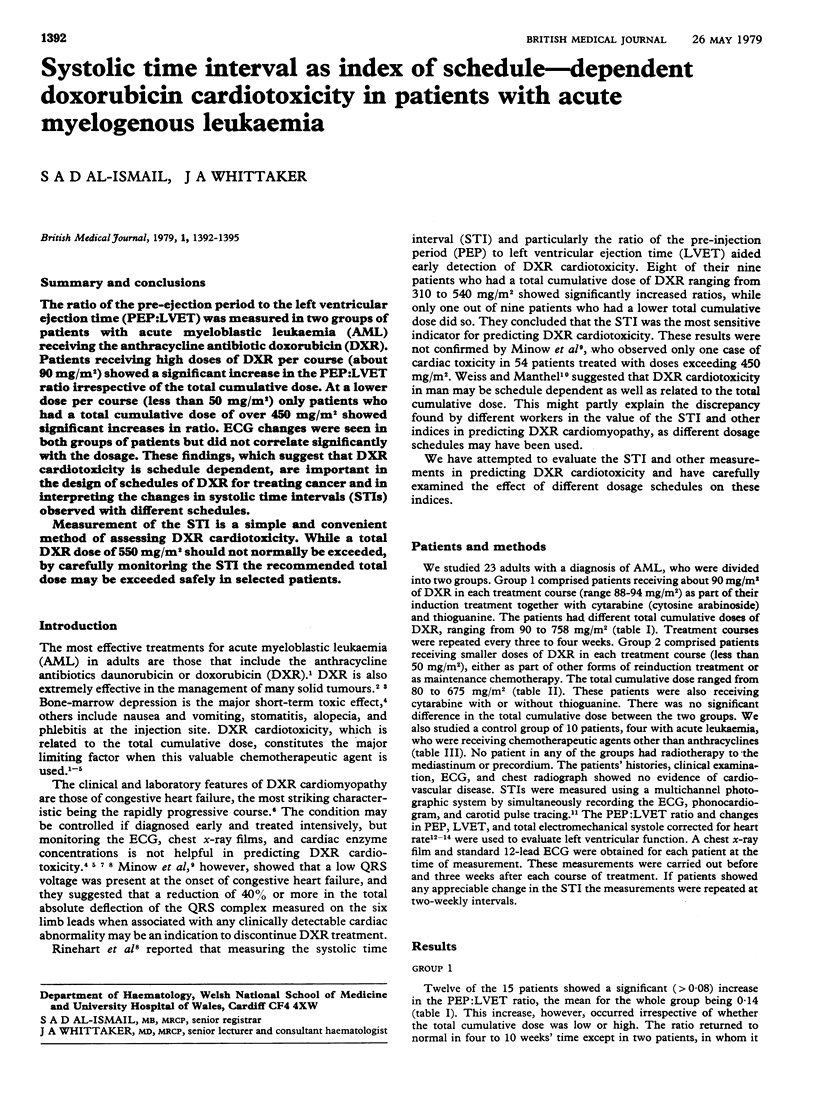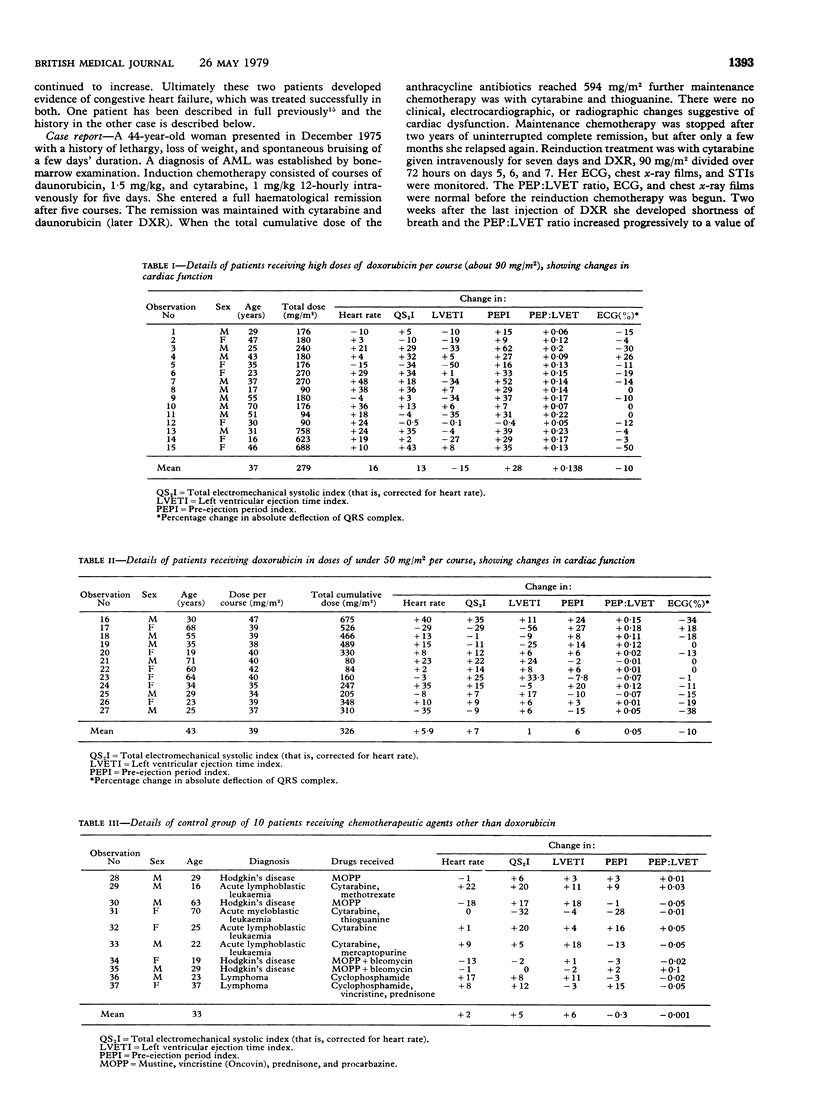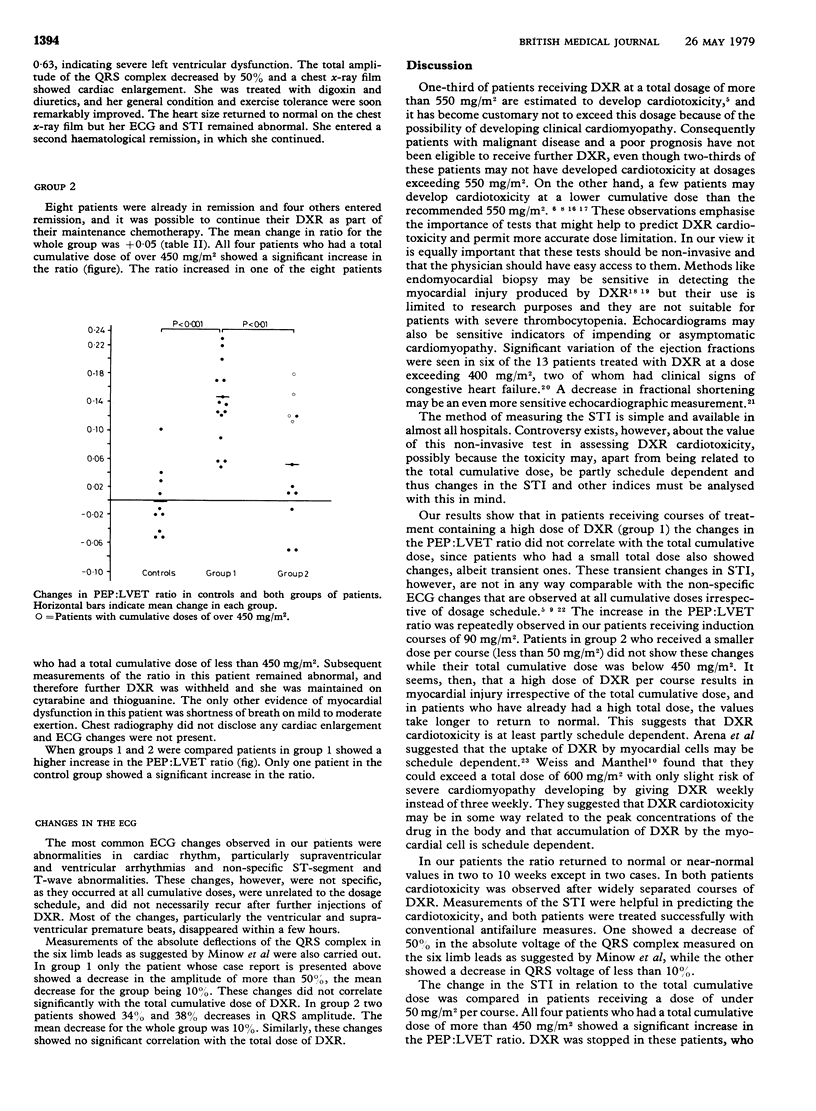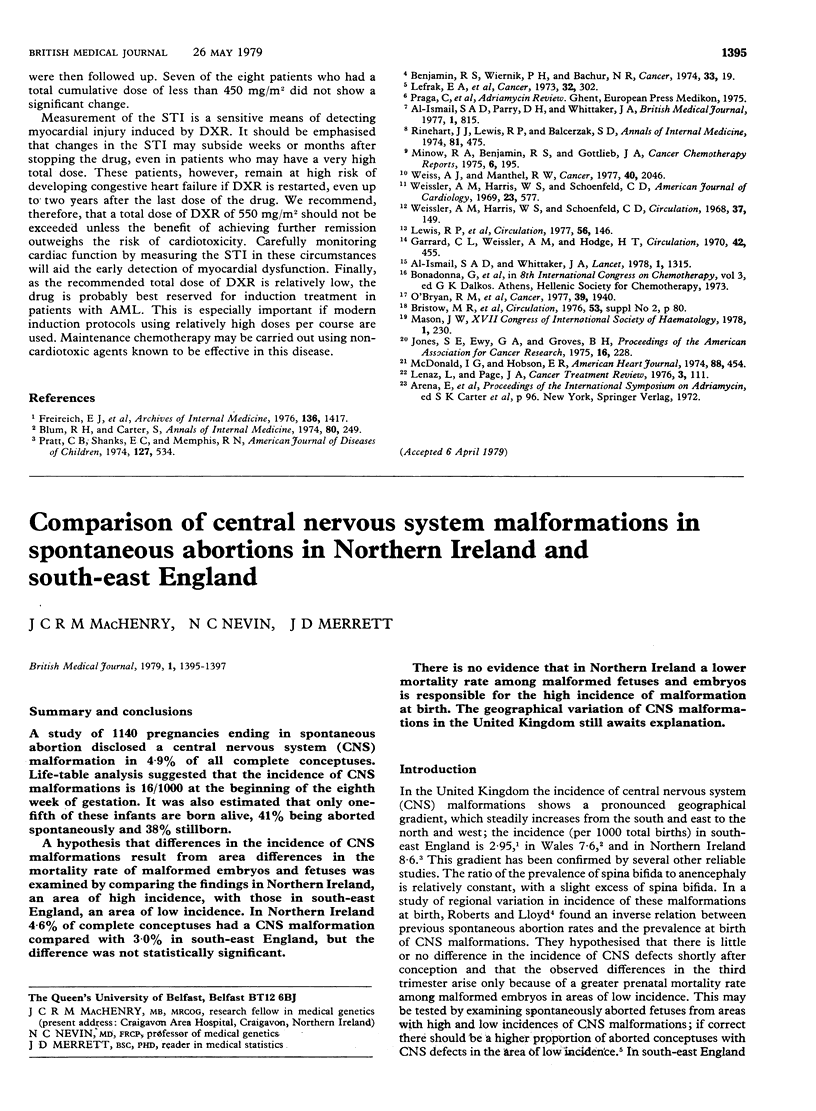Abstract
The ratio of the pre-ejection period to the left ventricular ejection time (PEP:LVET) was measured in two groups of patients with acute myeloblastic leukaemia (AML) receiving the anthracycline antibiotic doxorubicin (DXR). Patients receiving high doses of DXR per course (about 90 mg/m2) showed a significant increase in the PEP:LVET ratio irrespective of the total cumulative dose. At a lower dose per course (less than 50mg/m2) only patients who had a total cumulative dose of over 450 mg/m2 showed significant increases in ratio. ECG changes were seen in both groups of patients but did not correlate significantly with the dosage. These findings, which suggest that DXR cardiotoxicity is schedule dependent, are important in the design of schedules of DXR for treating cancer and in interpreting the changes in systolic time intervals (STIs) observed with different schedules. Measurement of the STI is a simple and convenient method of assessing DXR cardiotoxicity. While a total DXR dose of 550 mg/m2 should not normally be exceeded, by carefully monitoring the STI the recommended total dose may be exceeded safely in selected patients.
Full text
PDF



Selected References
These references are in PubMed. This may not be the complete list of references from this article.
- Al-Ismail S. A., Parry D. H., Whittaker J. A. Anthracycline cardiotoxicity and acute myelogenous leukaemia. Br Med J. 1977 Mar 26;1(6064):815–815. doi: 10.1136/bmj.1.6064.815. [DOI] [PMC free article] [PubMed] [Google Scholar]
- Al-Ismail S. A., Whittaker J. A. Systolic time interval to predict doxorubicin cardiotoxicity. Lancet. 1978 Jun 17;1(8077):1315–1315. doi: 10.1016/s0140-6736(78)91304-1. [DOI] [PubMed] [Google Scholar]
- Benjamin R. S., Wiernik P. H., Bachur N. R. Adriamycin chemotherapy--efficacy, safety, and pharmacologic basis of an intermittent single high-dosage schedule. Cancer. 1974 Jan;33(1):19–27. doi: 10.1002/1097-0142(197401)33:1<19::aid-cncr2820330107>3.0.co;2-m. [DOI] [PubMed] [Google Scholar]
- Blum R. H., Carter S. K. Adriamycin. A new anticancer drug with significant clinical activity. Ann Intern Med. 1974 Feb;80(2):249–259. doi: 10.7326/0003-4819-80-2-249. [DOI] [PubMed] [Google Scholar]
- Freireich E. J., Bodey G. P., McCredie K. B., Hersh E. M., Gehan E. A., Hart J., Gutterman J. U., Rodriguez V., Smith T., Hester J. P. Developmental therapy in adult acute leukemia. Arch Intern Med. 1976 Dec;136(12):1417–1421. [PubMed] [Google Scholar]
- Garrard C. L., Jr, Weissler A. M., Dodge H. T. The relationship of alterations in systolic time intervals to ejection fraction in patients with cardiac disease. Circulation. 1970 Sep;42(3):455–462. doi: 10.1161/01.cir.42.3.455. [DOI] [PubMed] [Google Scholar]
- Lefrak E. A., Pitha J., Rosenheim S., Gottlieb J. A. A clinicopathologic analysis of adriamycin cardiotoxicity. Cancer. 1973 Aug;32(2):302–314. doi: 10.1002/1097-0142(197308)32:2<302::aid-cncr2820320205>3.0.co;2-2. [DOI] [PubMed] [Google Scholar]
- Lenaz L., Page J. A. Cardiotoxicity of adriamycin and related anthracyclines. Cancer Treat Rev. 1976 Sep;3(3):111–120. doi: 10.1016/s0305-7372(76)80018-7. [DOI] [PubMed] [Google Scholar]
- Lewis R. P., Rittogers S. E., Froester W. F., Boudoulas H. A critical review of the systolic time intervals. Circulation. 1977 Aug;56(2):146–158. doi: 10.1161/01.cir.56.2.146. [DOI] [PubMed] [Google Scholar]
- McDonald I. G., Hobson E. R. A comparison of the relative value of noninvasive techniques--echocardiography, systolic time intervals, and apexcardiography--in the diagnosis of primary myocardial disease. Am Heart J. 1974 Oct;88(4):454–462. doi: 10.1016/0002-8703(74)90205-1. [DOI] [PubMed] [Google Scholar]
- O'Bryan R. M., Baker L. H., Gottlieb J. E., Rivkin S. E., Balcerzak S. P., Grumet G. N., Salmon S. E., Moon T. E., Hoogstraten B. Dose response evaluation of adriamycin in human neoplasia. Cancer. 1977 May;39(5):1940–1948. doi: 10.1002/1097-0142(197705)39:5<1940::aid-cncr2820390505>3.0.co;2-0. [DOI] [PubMed] [Google Scholar]
- Pratt C. B., Shanks E. C. Doxorubicin in treatment of malignant solid tumors in children. Am J Dis Child. 1974 Apr;127(4):534–536. doi: 10.1001/archpedi.1974.02110230080012. [DOI] [PubMed] [Google Scholar]
- Rinehart J. J., Lewis R. P., Balcerzak S. P. Adriamycin cardiotoxicity in man. Ann Intern Med. 1974 Oct;81(4):475–478. doi: 10.7326/0003-4819-81-4-475. [DOI] [PubMed] [Google Scholar]
- Weiss A. J., Manthel R. W. Experience with the use of adriamycin in combination with other anticancer agents using a weekly schedule, with particular reference to lack of cardiac toxicity. Cancer. 1977 Nov;40(5):2046–2052. doi: 10.1002/1097-0142(197711)40:5<2046::aid-cncr2820400508>3.0.co;2-5. [DOI] [PubMed] [Google Scholar]
- Weissler A. M., Harris W. S., Schoenfeld C. D. Bedside technics for the evaluation of ventricular function in man. Am J Cardiol. 1969 Apr;23(4):577–583. doi: 10.1016/0002-9149(69)90012-5. [DOI] [PubMed] [Google Scholar]
- Weissler A. M., Harris W. S., Schoenfeld C. D. Systolic time intervals in heart failure in man. Circulation. 1968 Feb;37(2):149–159. doi: 10.1161/01.cir.37.2.149. [DOI] [PubMed] [Google Scholar]


